How to cause the leaves of Chinese bamboos to turn yellow and introduce the culture methods
Asparagus is a highly ornamental beautiful green plant, which is also planted indoors, which can clean the air, kill bacteria and regulate the indoor air. The leaves of asparagus are soft and dense, and it is easy to yellowing leaves in the process of culture. excessive light and improper watering may lead to the yellowing of asparagus leaves. in order to solve the yellowing of asparagus leaves, we need to find out the reason why the leaves are yellowing. What to do if the leaves of asparagus turn yellow? now I will introduce to you the reasons and the methods of breeding.
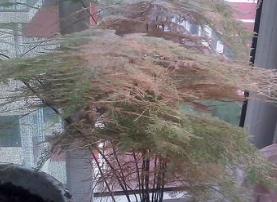
How to cause the leaves of Chinese bamboos to turn yellow and introduce the culture methods
Asparagus leaves slender and beautiful, dense, such as feathery, elegant plant shape, unique charm, deeply loved by people, is a more common indoor foliage flowers. Friends who have raised asparagus will find that the leaves are easily yellowed in the process of breeding. What if they encounter the yellowing of asparagus leaves? Identify the root cause of the disease and "prescribe the right medicine to the case".
The reason why the leaves of asparagus turn yellow:
1. The temperature is too high. Although asparagus likes to be warm, it should not be placed near the fire for a long time, otherwise the leaves of the whole branch will turn yellow and fall off, and the stem will dry up.
2. Direct exposure. Asparagus can not shine directly in the strong sun, which will cause the branches and leaves to be withered and yellow. in addition, when asparagus is exposed to strong light for a long time, the plant is stagnant at first, and then the leaves are yellow.
3. Improper watering. Asparagus likes to be wet, if you ignore watering, or only irrigate the topsoil, the roots do not absorb enough water, and the stems and leaves turn yellow slowly. But also do not accumulate water in the flowerpot, the water is easy to rot roots and leaves withered and yellow.
4. There is not enough light. Asparagus likes warmth and is placed in a shady environment for a long time, and the plant grows weakly and then turns yellow. It is best to put it in a place with plenty of sun in winter, if you put it in a place where there is not enough light, coupled with poor ventilation and cold, it is easy to cause withered and yellow branches and leaves. If such a phenomenon occurs, it is necessary to replace asparagus with new trainers.
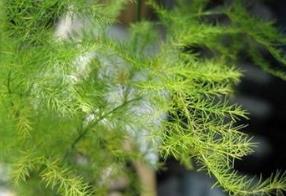
5. Improper fertilization. It is necessary to fertilize asparagus regularly so that it has enough nutrients, and the supply of nutrients falls short of demand, and the branches and leaves will turn yellow. Excessive concentration or the application of not yet mature fertilizer is easy to burn seedlings even if dry, long-term not topdressing, will also be fat and yellowing.
6. Suffer frost injury. Asparagus likes to be warm, and the temperature is low in winter. If the indoor temperature is lower than 5 ℃, plastic cover should be used to keep out the cold, otherwise it is easy to freeze and wither.
7. Infected with diseases and insect pests. Once asparagus is infected with shell insects and other pests, it will also cause withered and yellow branches and leaves, so it should be controlled in time.
8. Improper placement. If asparagus is placed next to the TV, the leaf tip will gradually dry up.
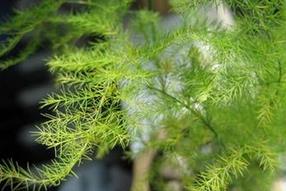
There are two main reasons for the yellowing of asparagus leaves: one is that the temperature is low, and the other is that the basin soil is too dry. Asparagus can only grow well at 18-28 ℃. What about the yellow leaves of asparagus? In winter, asparagus should be exposed to more sunshine. Families with conditions can put asparagus on the balcony facing south. In summer, astigmatism can be avoided and should be placed in a shady place.
In addition, the reason for the yellowing of asparagus leaves may also be that asparagus culture pots are placed next to organic items such as heating bags, air conditioners and televisions, which can also cause asparagus leaves yellowing and shedding because of high radioactivity, and the stems will dry up over a long period of time, so pay attention to it when placing flowerpots in asparagus culture.
The main reason for the yellowing of asparagus leaves is nothing more than the above factors, at the same time in the daily maintenance should be a little careful care, can not ignore. If the leaves of asparagus turn yellow because of insufficient nutrition, here the editor teaches you a soil way to improve the nutrition of asparagus, that is, pour white sugar water on asparagus to ensure that it can make your asparagus grow very luxuriantly.
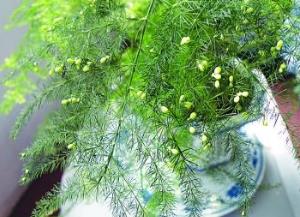
Breeding methods:
Heating in winter, the home is relatively dry, which is disadvantageous to the growth of asparagus, so it is necessary to spray water on the leaves of asparagus every day to increase humidity. Asparagus cannot be watered when it is too dry or too wet, both of which can cause asparagus leaves to turn yellow. Observe the dryness and wetness of the basin soil. If the basin soil of 1m / m is dry, it indicates that it should be watered.
If asparagus does not grow luxuriantly, it should be fertilized. Here is a local way to pour white sugar water on asparagus, which can also increase nutrition. Pouring asparagus with 5% white sugar water every 20 days can make it grow luxuriantly.
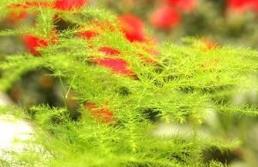
Potted asparagus, such as improper maintenance, often appear branches and leaves yellowing phenomenon. The causes of asparagus branches and leaves yellowing and its prevention measures are summarized as follows: (1) the light is too strong. Asparagus likes half yin and half yang, and avoids strong sunlight, otherwise it will cause branches and leaves to turn yellow. So give asparagus shade. (2) improper watering. Asparagus likes to be moist but afraid of waterlogging, so it is appropriate to choose sandy soil with aeration and seepage. Watering properly, more will rot the root, less will make the leaves withered and yellow. When the weather is hot and dry, spray clear water on the branches and leaves every day to increase environmental humidity and compensate for water evaporation. (3) lack of nutrients. Potted asparagus, if changed for many years, will cause insufficient soil nutrients. If only water is poured at ordinary times, but not fertilizer, it will also result in insufficient nutrition. Potted asparagus should be watered with dilute rotten liquid fertilizer once a week and watered and loosened in time. (4) improper fertilization. If too thick or non-rotten fertilizer is applied, the roots will be hurt and the leaves will turn yellow and fall off. The basin soil should be washed with water, the concentration of fertilizer solution should be diluted, or the soil should be changed immediately. (5) poor winter management. Asparagus likes warmth and is afraid of cold. In winter, asparagus should be kept indoors in a sunny warm place, with room temperature above 8-12 ℃, long-term shade, room temperature below 8 ℃, and branches and leaves will turn yellow. Watering must also be controlled. (6) smoke pollution. Asparagus is afraid of smoke and toxic gases, so it should be placed in a ventilated place to avoid pollution. And often spray water on the branches and leaves to wash away the dust.

Potted asparagus, such as improper maintenance, often appear branches and leaves yellowing phenomenon. The causes of asparagus branches and leaves yellowing and its prevention measures are summarized as follows: (1) the light is too strong. Asparagus likes half yin and half yang, and avoids strong sunlight, otherwise it will cause branches and leaves to turn yellow. So give asparagus shade. (2) improper watering. Asparagus likes to be moist but afraid of waterlogging, so it is appropriate to choose sandy soil with aeration and seepage. Watering properly, more will rot the root, less will make the leaves withered and yellow. When the weather is hot and dry, spray clear water on the branches and leaves every day to increase environmental humidity and compensate for water evaporation. (3) lack of nutrients. Potted asparagus, if changed for many years, will cause insufficient soil nutrients. If only water is poured at ordinary times, but not fertilizer, it will also result in insufficient nutrition. Potted asparagus should be watered with dilute rotten liquid fertilizer once a week and watered and loosened in time. (4) improper fertilization. If too thick or non-rotten fertilizer is applied, the roots will be hurt and the leaves will turn yellow and fall off. The basin soil should be washed with water, the concentration of fertilizer solution should be diluted, or the soil should be changed immediately. (5) poor winter management. Asparagus likes warmth and is afraid of cold. In winter, asparagus should be kept indoors in a sunny warm place, with room temperature above 8-12 ℃, long-term shade, room temperature below 8 ℃, and branches and leaves will turn yellow. Watering must also be controlled. (6) smoke pollution. Asparagus is afraid of smoke and toxic gases, so it should be placed in a ventilated place to avoid pollution. And often spray water on the branches and leaves to wash away the dust.
Related
- Wuhan Hospital Iron Tree Blooming Result Was Instantly Frightened by the Gardener Master
- Which variety of camellia is the most fragrant and best? Which one do you like best?
- What is the small blue coat, the breeding methods and matters needing attention of the succulent plant
- Dormancy time and maintenance management of succulent plants during dormancy
- Minas succulent how to raise, Minas succulent plant pictures
- What are the varieties of winter succulent plants
- How to raise succulent plants in twelve rolls? let's take a look at some experience of breeding twelve rolls.
- Attention should be paid to water control for succulent plants during dormant period (winter and summer)
- Watering experience of twelve rolls of succulent plants
- Techniques for fertilizing succulent plants. An article will let you know how to fertilize succulent plants.



